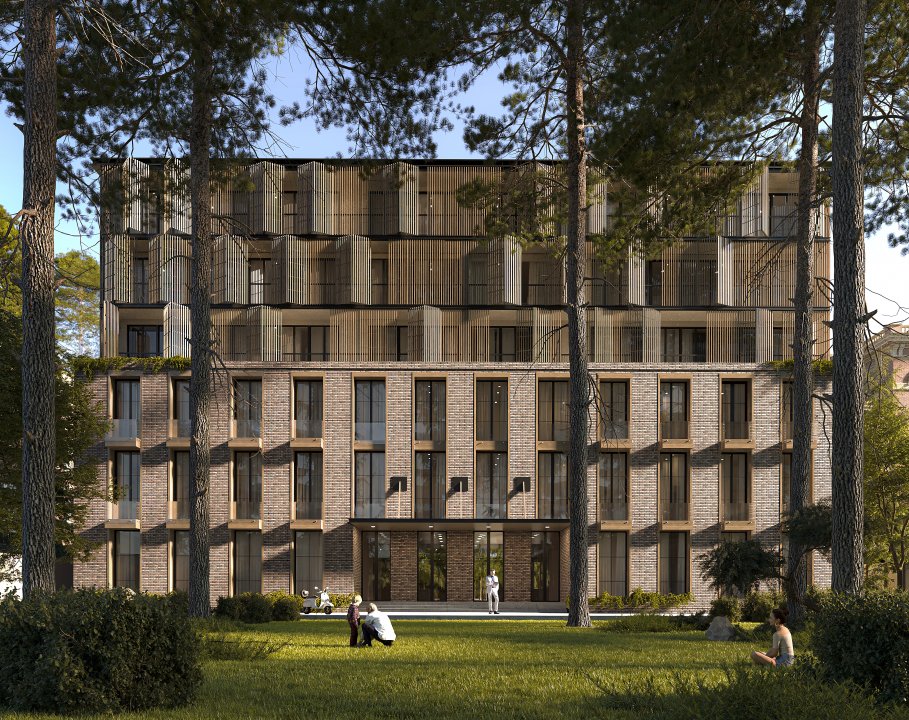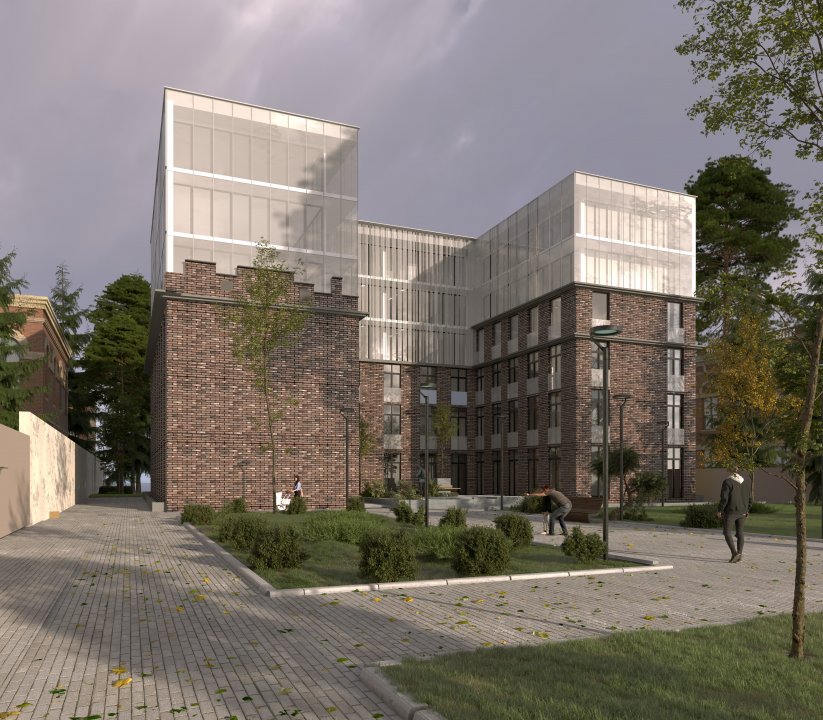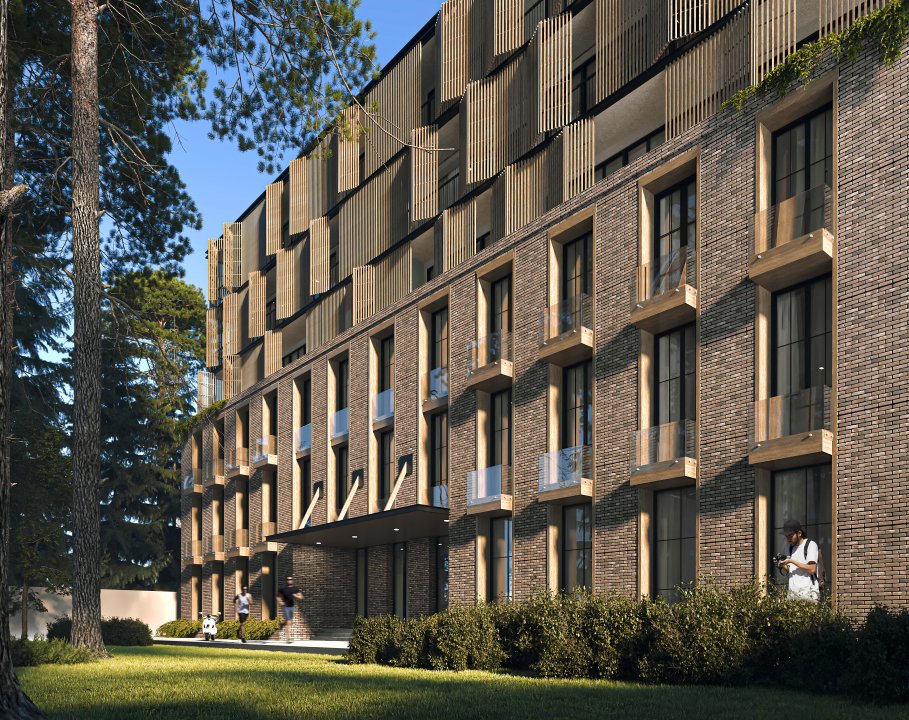MULTIFUNCTIONAL RESIDENTIAL COMPLEX ON AGHMASHENEBELI AVENUE
-
PROJECT TYPECONCEPT DESIGN
-
PROJECT YEAR2024
-
FINISHED
-
AREA
-
CLIENTCONFIDENTIAL
-
LOCATIONAGHMASHENEBELI AVE. №139
ABOUT THE PROJECT
RESEARCH BUILDING OF PARASITOLOGY
The area is located between Davit Aghmashenebeli Avenue, Ia Kargareteli Street, and Mikheil Tsinamdzghvrishvili Street. It unites three cadastral plots and the buildings situated on them. The clinical building was constructed in the 1930s. Unfortunately, the architectural project cannot be found in the archives and the author remains unknown. Based on plans from 1898, the land plot is approximately 1,052 square meters. Today the site contains about 10 auxiliary structures, the largest of which is the former vivarium.
The object is located behind the former house of engineer Samoilovch’s wife, Alexandra, situated deep within the plot.
The building has a shape of letter П . The central frontal facade is 33 meters in length and it faces the administrative building. The structure is executed in the style of historicism. The main facade, which opens onto Mikheil Avenue is richly decorated. The facade surface is almost entirely covered with variously sized and shaped rustications. The composition is symmetrical.
The building located deeper into the courtyard is clearly planned, constructed with pure brick masonry and features modest, undecorated facades, leaving a restrained impression. However, this simplicity is not characteristic of 1930s constructivism. it more closely resembles the architecture of barracks or utility buildings from the end of 19 th and early 20 th centries. Despite its significant size which almost entirely blocked and divided the garden into two parts, the simplicity of its architectural solution and the well-chosen materials result in a calm, unobtrusive and background architectural object that integrates softly into the existing environment and leaves a distinct, epochal imprint.
After Sovietization, the building housed the Tbilisi Central Malaria Station, which was transformed into the Institute of Tropical Diseases with the help of Spiridon Virsaladze.
Currently, the site hosts approximately 260 plants of 30 species. The garden of the Parasitology Institute still retains features of the Samoilovich family garden. In the noisy city center, surrounded by urban development on all sides, this green oasis holds value not only in the context of historical cultural heritage but also in modern reality. From a neighborhood once immersed in gardens, only fragments of greenery remain today. Such recreational spaces are of great value both for the neighborhood and the city as a whole.
The object is located behind the former house of engineer Samoilovch’s wife, Alexandra, situated deep within the plot.
The building has a shape of letter П . The central frontal facade is 33 meters in length and it faces the administrative building. The structure is executed in the style of historicism. The main facade, which opens onto Mikheil Avenue is richly decorated. The facade surface is almost entirely covered with variously sized and shaped rustications. The composition is symmetrical.
The building located deeper into the courtyard is clearly planned, constructed with pure brick masonry and features modest, undecorated facades, leaving a restrained impression. However, this simplicity is not characteristic of 1930s constructivism. it more closely resembles the architecture of barracks or utility buildings from the end of 19 th and early 20 th centries. Despite its significant size which almost entirely blocked and divided the garden into two parts, the simplicity of its architectural solution and the well-chosen materials result in a calm, unobtrusive and background architectural object that integrates softly into the existing environment and leaves a distinct, epochal imprint.
After Sovietization, the building housed the Tbilisi Central Malaria Station, which was transformed into the Institute of Tropical Diseases with the help of Spiridon Virsaladze.
Currently, the site hosts approximately 260 plants of 30 species. The garden of the Parasitology Institute still retains features of the Samoilovich family garden. In the noisy city center, surrounded by urban development on all sides, this green oasis holds value not only in the context of historical cultural heritage but also in modern reality. From a neighborhood once immersed in gardens, only fragments of greenery remain today. Such recreational spaces are of great value both for the neighborhood and the city as a whole.


